

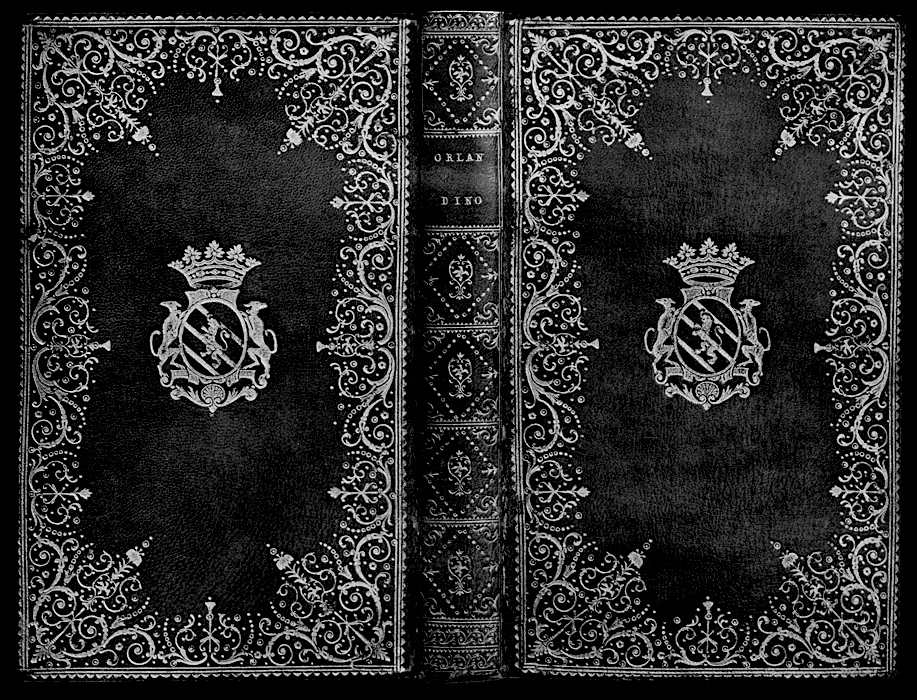
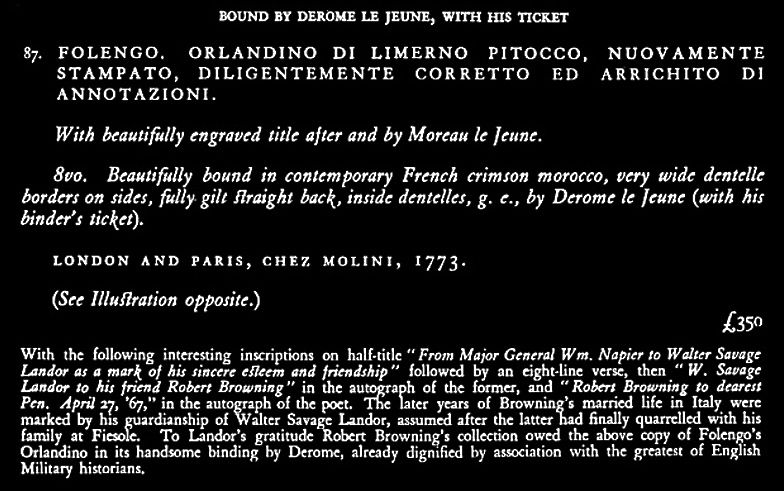
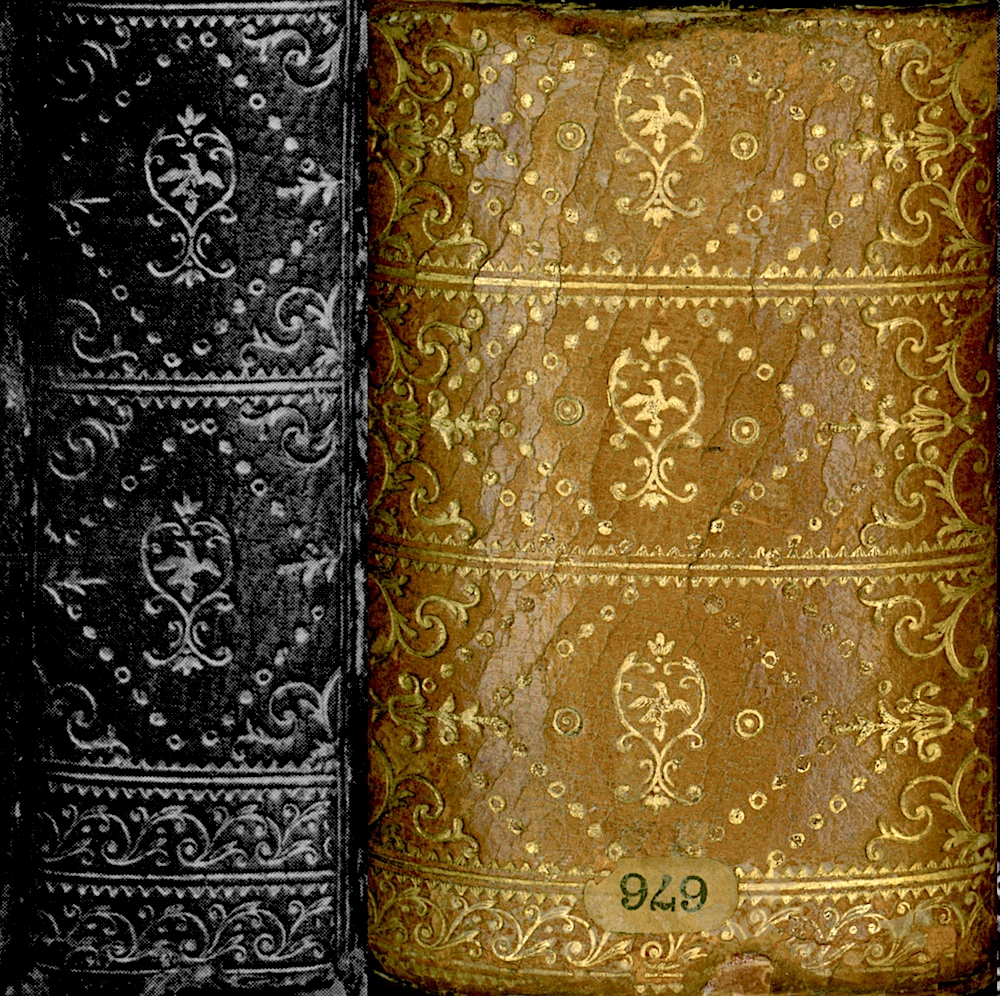
| I would like to thank the British Library again for letting me show you this rather special binding shelfmarked 676b1, it actually comprises 3 pieces, A Bible and it's slip case in 2 parts. We have looked at the binding of the Bible on the previous page, and now attempt to compare the slip case to a reproduction of a Derome binding found in a 1930 Maggs Bros catalogue A collection of French XVIIIth century illustrated books with plates after Moreau le jeune, boucher, Choffard, Cochin, Coypel, Marillier, Eisen, Fessard, Greuze, St. Aubin,... listed as item 87. Note that they were selling this for 350 pounds in 1930 the equivalent of about $28.000 USD ) This binding shares a decoration of it's spine compartments and palette that is identical. Identical and unusual, in as much as this palette does not seem to appear on any other Derome bindings that I know of (so far). |
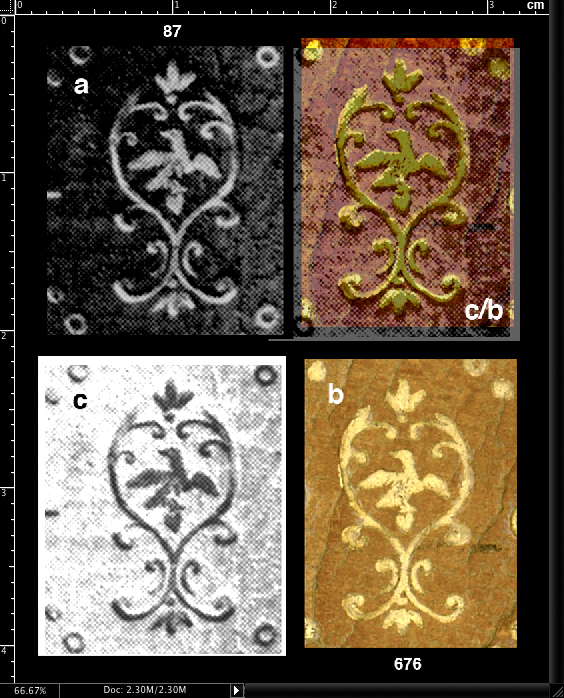
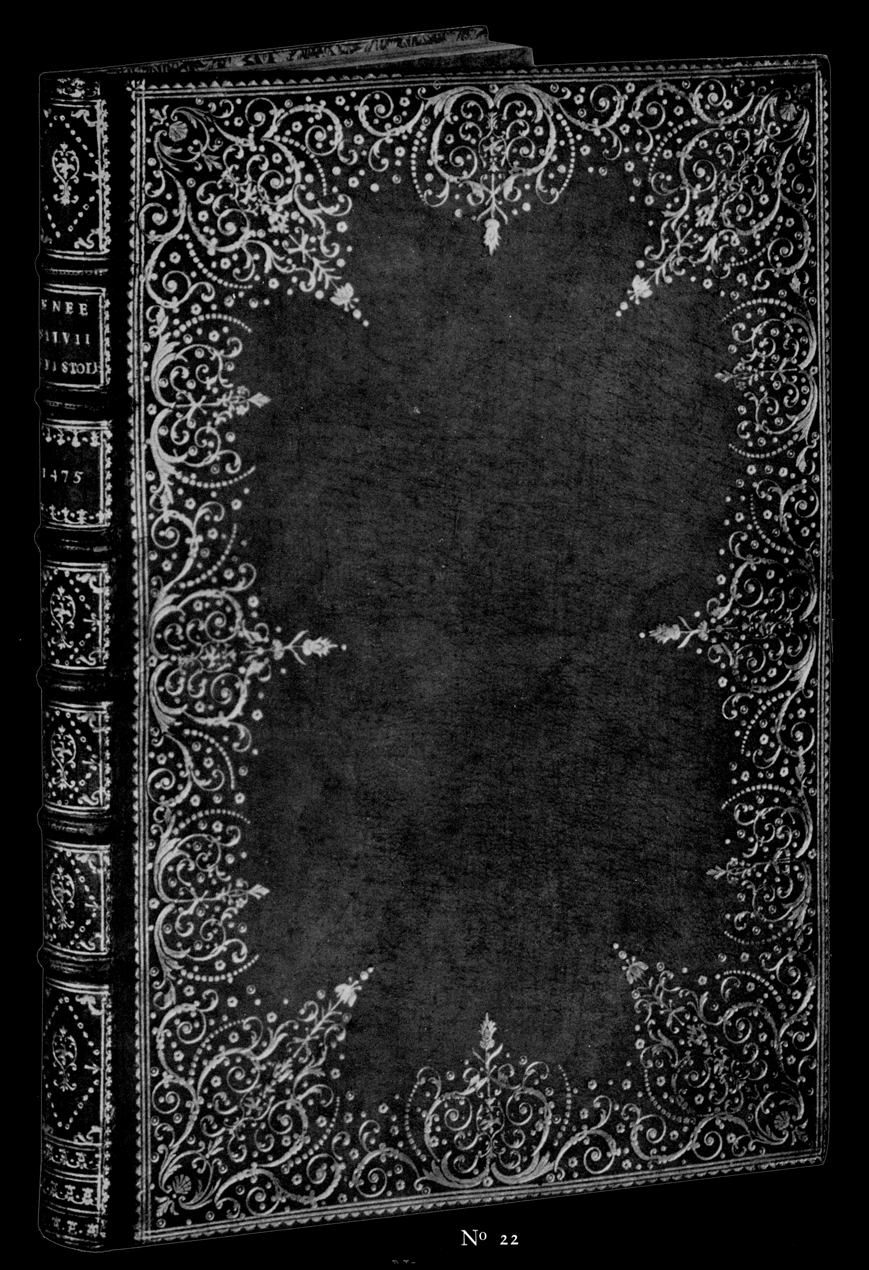
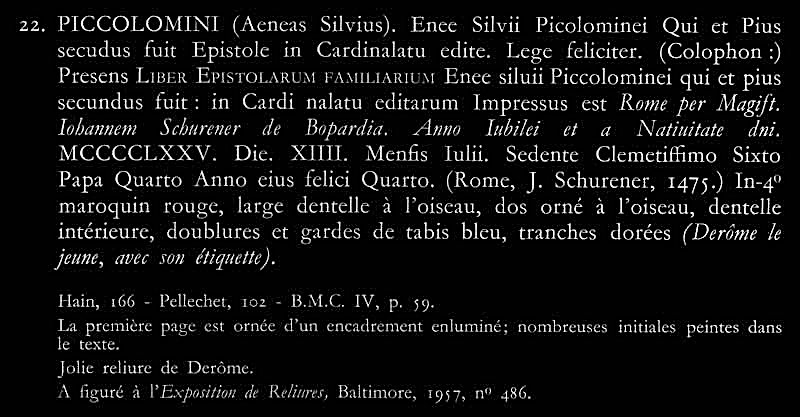
| Now I want to show you another unusual binding (number 22, shown above) that shares some common imprints with the bindings that we have looked at on the last page also related to the 676bi binding which one would image to be contemporaneous with the slip case. Number 22 also bears a Derome le jeune etiquette, this same binding was chosen by Edith Diehl, in her book BOOKBINDING Its Background and Technique, PLATE 44, as an example of a binding by Derome le jeune. Even though her book is pocket sized the reproductions are aamazingly sharp below I show an enlargement of her Plate 44 which was barely a few inches wide. |
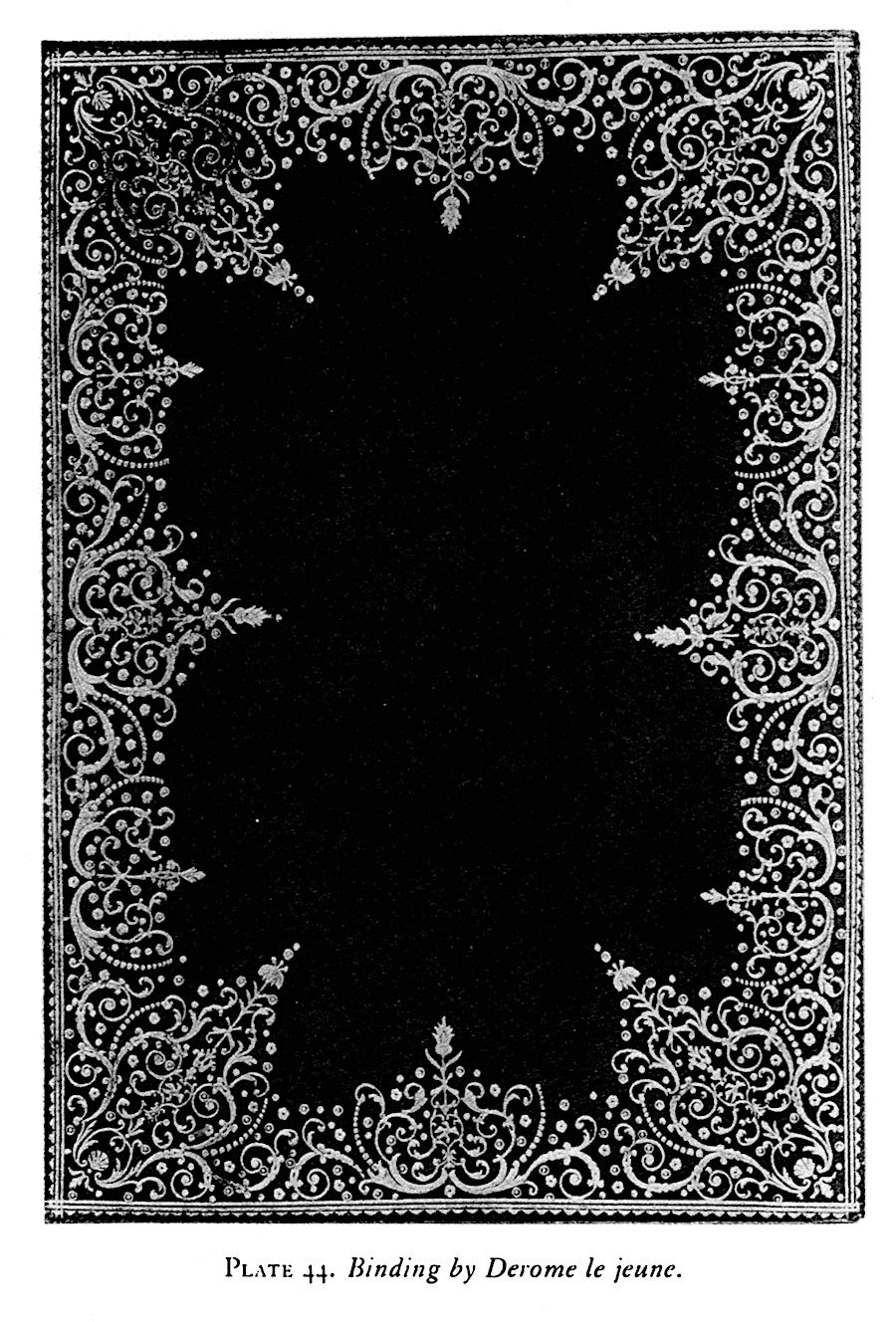
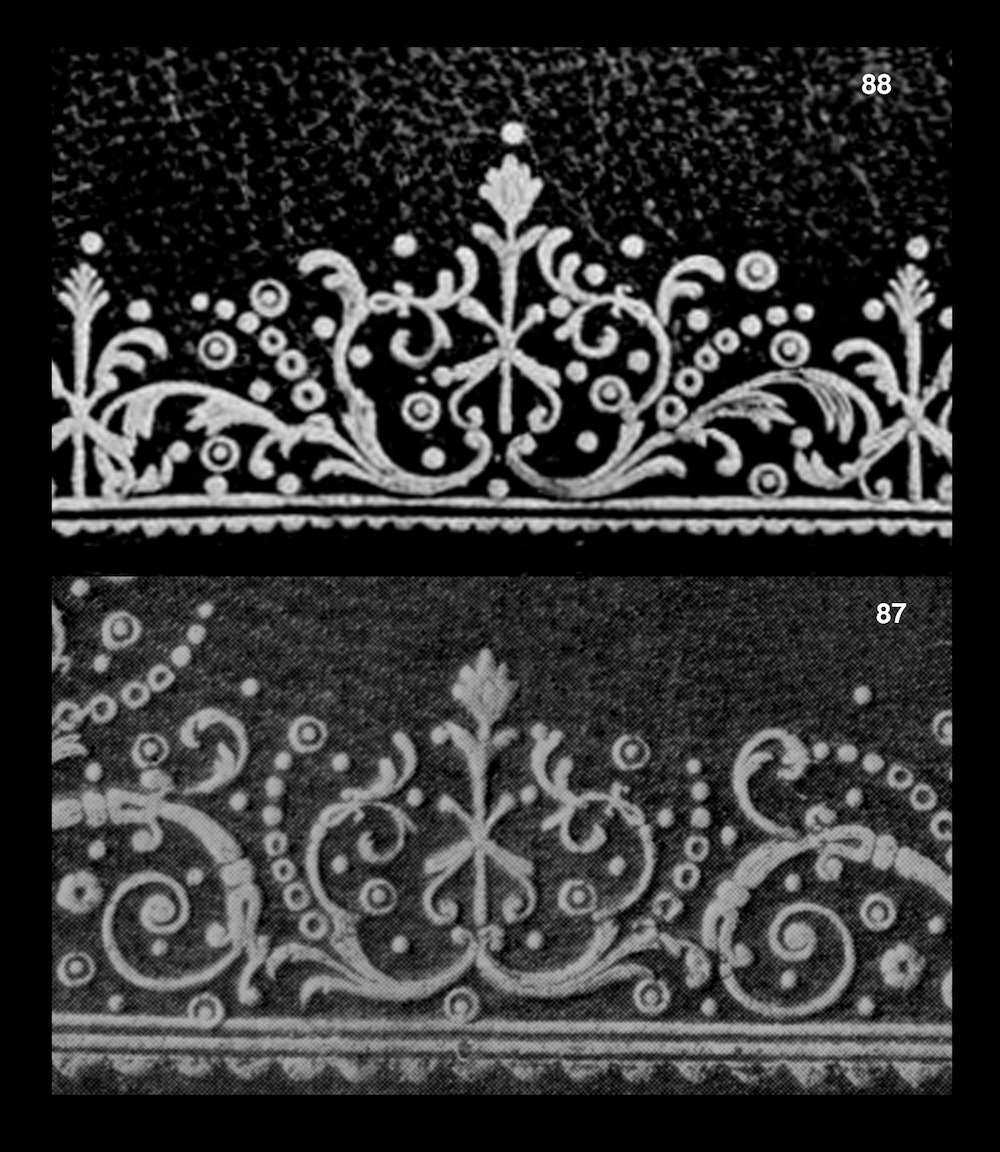
| The Plate 44 binding (22) shares some common imprints with binding 88 and is strongly linked to our 676bi Bible through a number of rare imprints, such as the one shown in Comparative Diagram 3, imprint dj-7-3. Even though we are working with low resolution reproductions from reproductions of old catalogues, we can still see that these imprints were probably made from the same rare tool that is only found on these few bindings, linking them together in what may be a rather limited time frame. I want to show you one more example of a Derome binding that is in the same style as binding 44, a true classic, that I was lucky to find in an old Maggs Bros catalogue. |
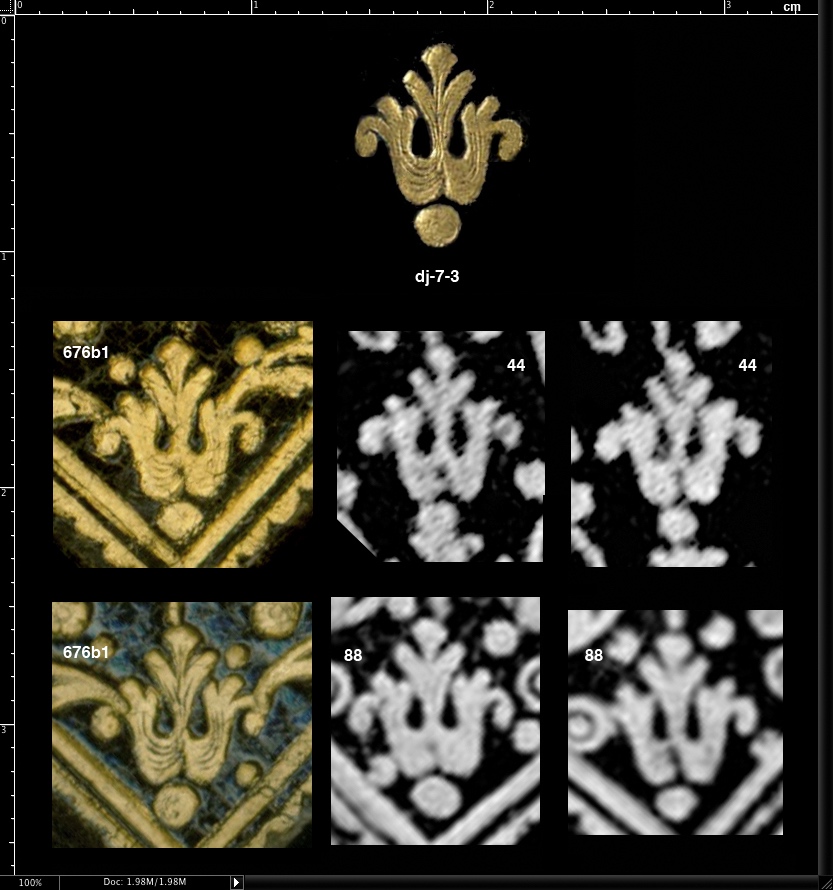
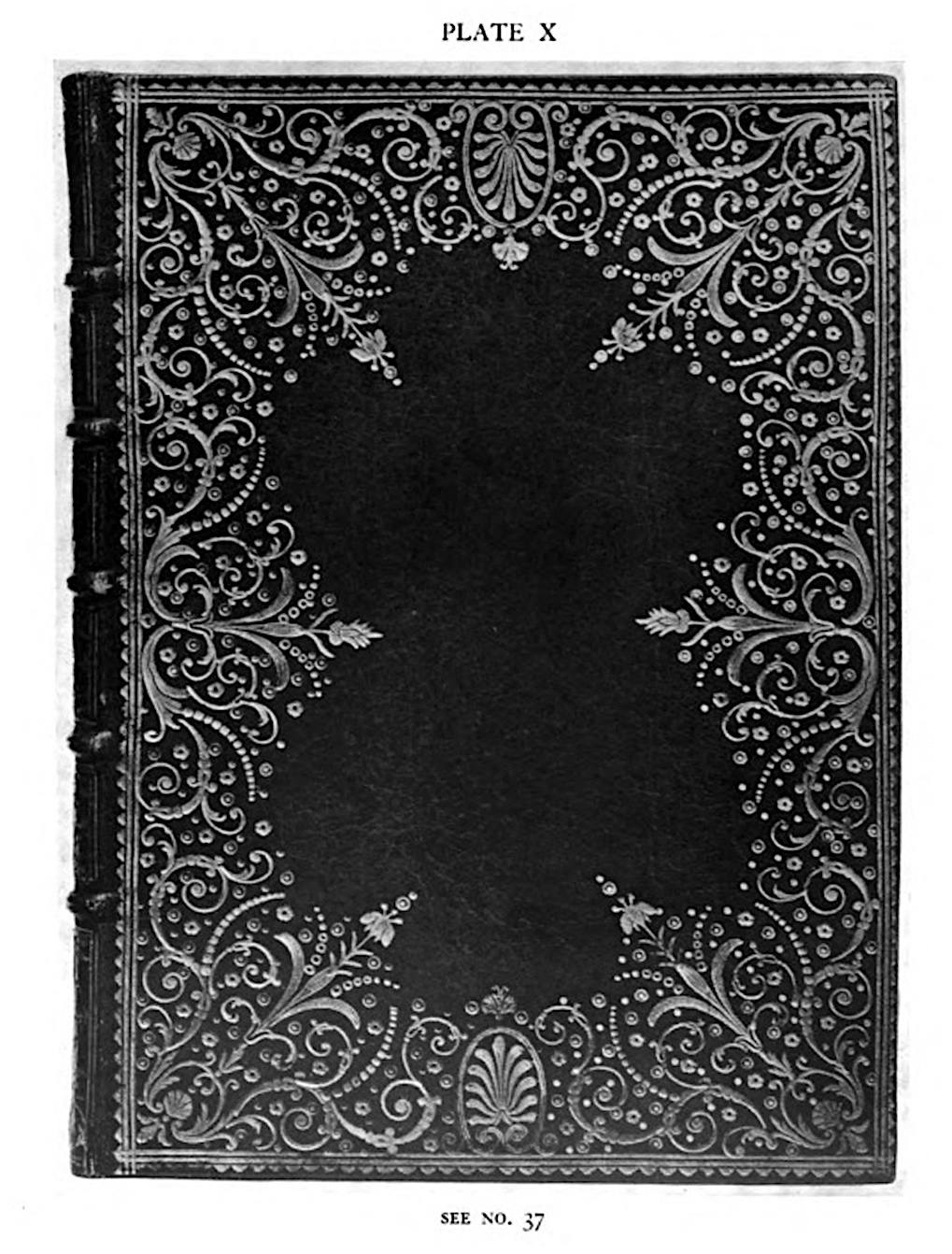
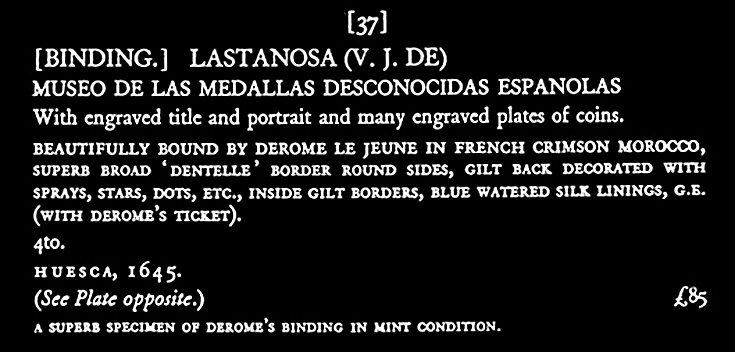
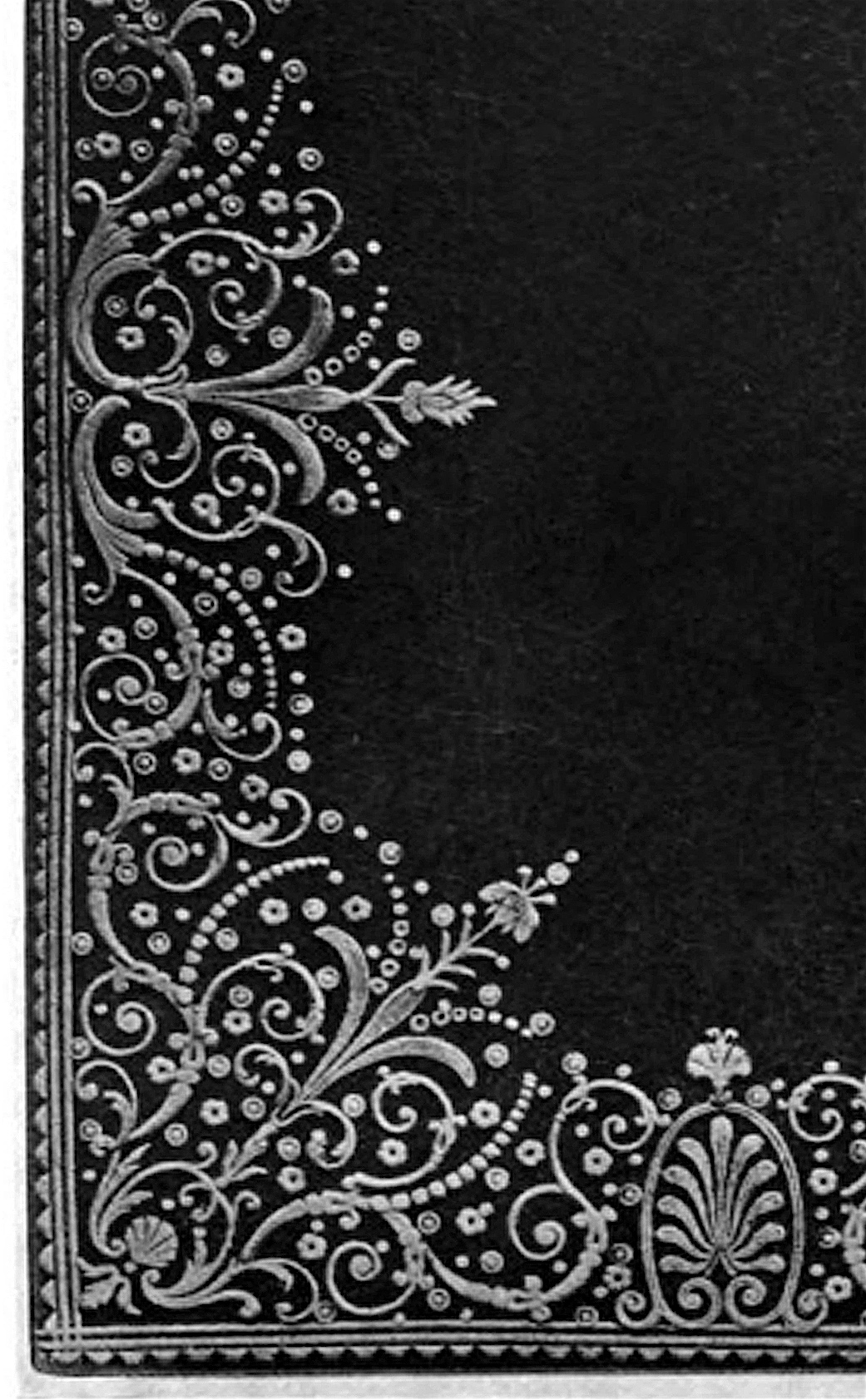
| We see in this binding some rare and unsual imprints that I have never, up to now, catalogued. The corner tool was so rare I wondered if it was a sign of a fake Derome binding, now with 2 examples we can be confident that this is a real Derome le jeune tool. Marius Michel has illustrated this tool in his 1880 book La Reliure francaise depuis l'nvention de l'imprimerie jusqu'a la fin du xviiie siecle (click here to see it on wikisource). I show this below with a rough translation of the text that flows around this illustration. This is very mysterious, Michel states that he has reproduced this illustration from a copy of a 1773 Dorat, then he says it was not the work of the Derome who we consider the most famous, as he was already dead 12 years since then. Obviously he is talking about Jacques-Antoine Derome. I find this strange because today we can only point to a single example of a dentelle binding by Jacques-Antoine Derome, what I am wondering is whether or not Michel attributed the dentelle bindings that we now attribute to Derome le jeune, to his father instead. Considering that we are seeing now a possibility that J A Derome did make some of the early dentelles, this may be another clue in that direction. However further down the page we see that Marius has attributed to Dubuisson his Planche XXII. This is impossible as Dubuisson was long in his grave by the time this binding was made. We have to remember that Michel was writing this years before the precisions of Gruel or Thoinan were available. It is important for us to note here, however, that these Derome imprints reproduced by Michel were found on the binding of a 1773 Dorat, this could mean that they are earlier than I assume. |

| "The laces of the eighteenth century are not, like those of the preceding century, repeating, but in combinations, as can be seen by the separate motifs which we give in the text and plate XXII. As a result, they have produced a much larger variety; one could, so to speak, say that there were not two exactly similar ones. These dentelles are a charming arrangement; we can judge by the fragment that we reproduce. The big bird's iron was on the spine and the central divisions of the boards. We have reproduced this dentelle from a copy of the Fables of Dorat, 1773. It was not the work of the one of Derome that we consider the most famous; he had been dead for twelve years" |
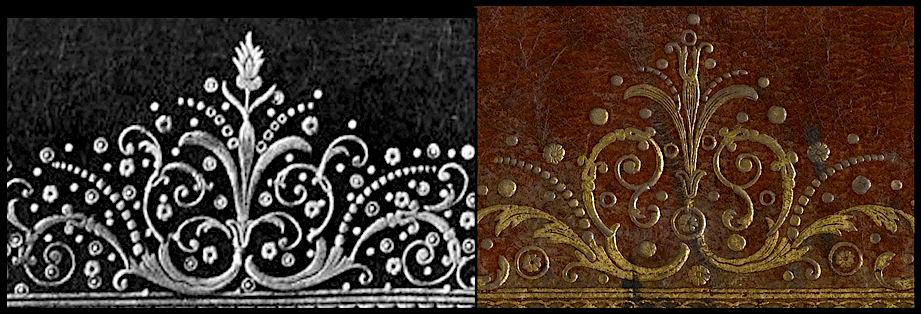
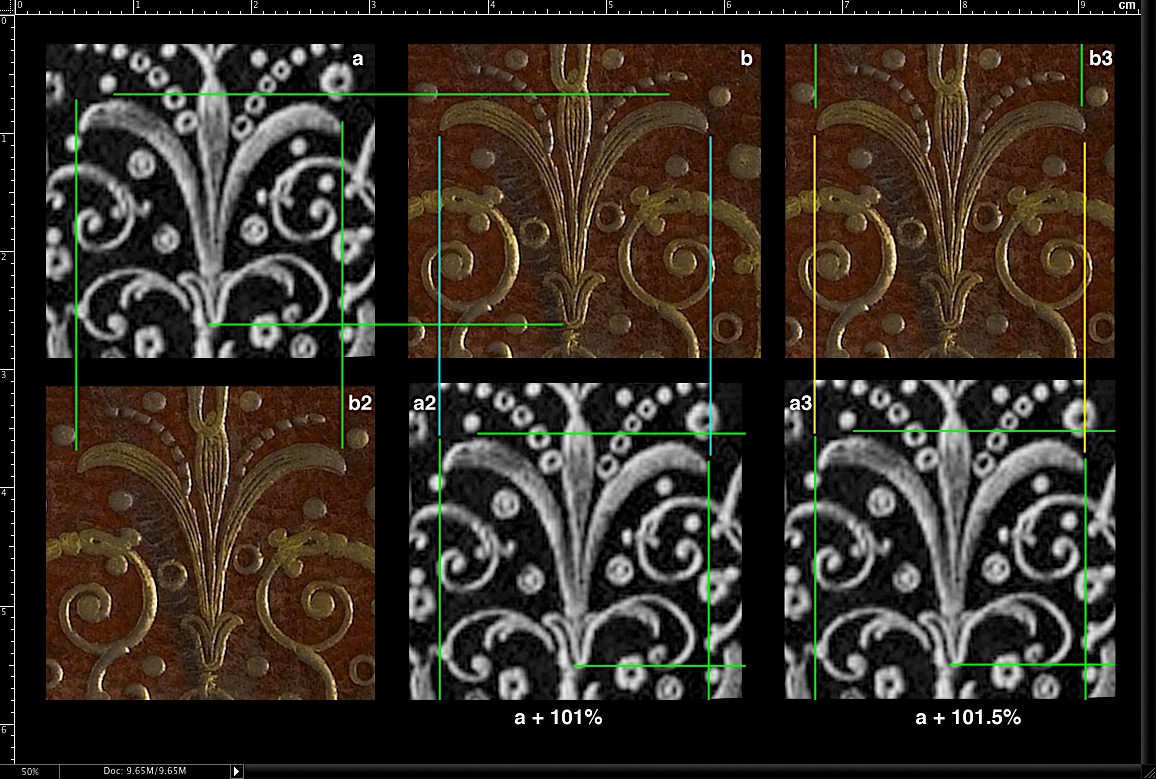
| The reproduction of binding 37 presented some limitation in quality however the real issue was size, after making Comparative Diagram 4, I wanted to be really sure of the size of these imprints. Fortunately we have in the Palace de Versailles coffret, high resolution imprints at an exact scale. In Comparative Diagram 4 we place the two dj-80 examples together and run lines from one to the other to check scale. In the b2 square we can see that the coffret example is bigger, meaning that the binding 37 as I had reproduced it was too small at this resolution. In the a2 square I have increased the size of the binding 37 imprint by 1% and we can see with the blue lines that it is still just a bit small. In the a3 square I have further increased the size by half a percent and now the imprints are nearly the same size. I suspect that small amount of variation in size is inevitable with leather bindings that are well over 200 years old. |
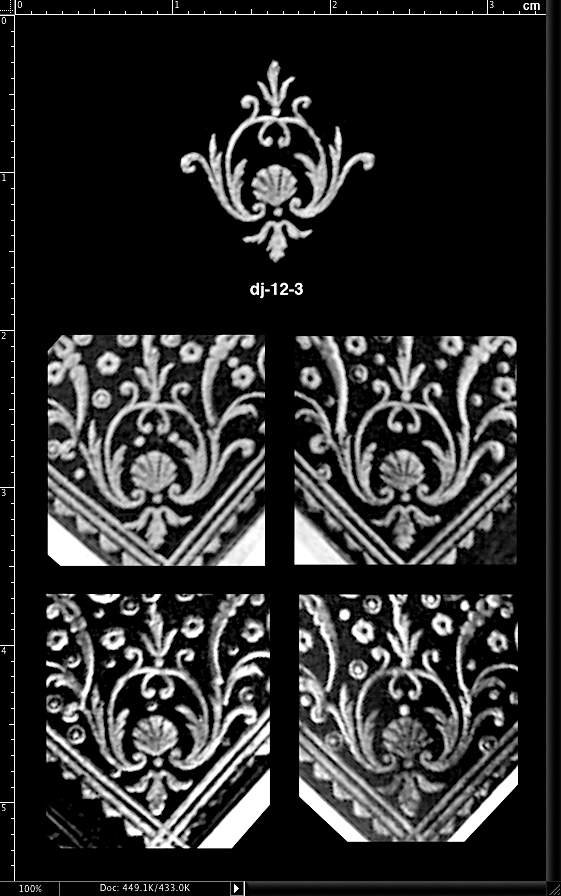
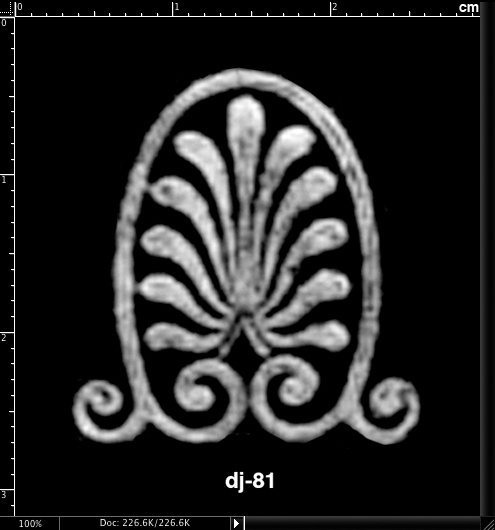
|
click here to return to the HOME page. click here to see the INDEX of the 2017 pages. see below links to previous work |
| Even experts are sometimes wrong, before you spend thousands on a book, please do your own research! Just because I say a certain binding can be attributed to le Maitre isn't any kind of guarantee, don't take my word for it, go a step further and get your own proof. In these pages I have provided you with a way of doing just that. |
| Virtual Bookings, created by L. A. Miller | return to the Home page of VIRTUAL BOOKBINDINGS |